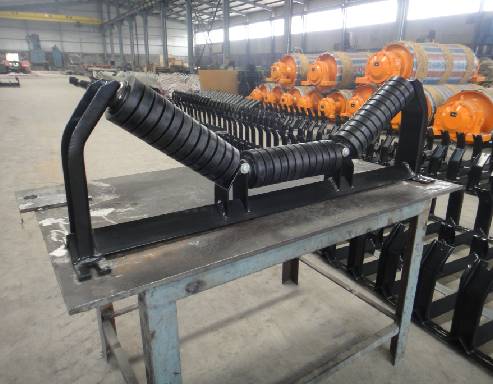 Afrikaans
Afrikaans  Albanian
Albanian  Amharic
Amharic  Arabic
Arabic  Armenian
Armenian  Azerbaijani
Azerbaijani  Basque
Basque  Belarusian
Belarusian  Bengali
Bengali  Bosnian
Bosnian  Bulgarian
Bulgarian  Catalan
Catalan  Cebuano
Cebuano  Corsican
Corsican  Croatian
Croatian  Czech
Czech  Danish
Danish  Dutch
Dutch  English
English  Esperanto
Esperanto  Estonian
Estonian  Finnish
Finnish  French
French  Frisian
Frisian  Galician
Galician  Georgian
Georgian  German
German  Greek
Greek  Gujarati
Gujarati  Haitian Creole
Haitian Creole  hausa
hausa  hawaiian
hawaiian  Hebrew
Hebrew  Hindi
Hindi  Miao
Miao  Hungarian
Hungarian  Icelandic
Icelandic  igbo
igbo  Indonesian
Indonesian  irish
irish  Italian
Italian  Japanese
Japanese  Javanese
Javanese  Kannada
Kannada  kazakh
kazakh  Khmer
Khmer  Rwandese
Rwandese  Korean
Korean  Kurdish
Kurdish  Kyrgyz
Kyrgyz  Lao
Lao  Latin
Latin  Latvian
Latvian  Lithuanian
Lithuanian  Luxembourgish
Luxembourgish  Macedonian
Macedonian  Malgashi
Malgashi  Malay
Malay  Malayalam
Malayalam  Maltese
Maltese  Maori
Maori  Marathi
Marathi  Mongolian
Mongolian  Myanmar
Myanmar  Nepali
Nepali  Norwegian
Norwegian  Norwegian
Norwegian  Occitan
Occitan  Pashto
Pashto  Persian
Persian  Polish
Polish  Portuguese
Portuguese  Punjabi
Punjabi  Romanian
Romanian  Russian
Russian  Samoan
Samoan  Scottish Gaelic
Scottish Gaelic  Serbian
Serbian  Sesotho
Sesotho  Shona
Shona  Sindhi
Sindhi  Sinhala
Sinhala  Slovak
Slovak  Slovenian
Slovenian  Somali
Somali  Spanish
Spanish  Sundanese
Sundanese  Swahili
Swahili  Swedish
Swedish  Tagalog
Tagalog  Tajik
Tajik  Tamil
Tamil  Tatar
Tatar  Telugu
Telugu  Thai
Thai  Turkish
Turkish  Turkmen
Turkmen  Ukrainian
Ukrainian  Urdu
Urdu  Uighur
Uighur  Uzbek
Uzbek  Vietnamese
Vietnamese  Welsh
Welsh  Bantu
Bantu  Yiddish
Yiddish  Yoruba
Yoruba  Zulu
Zulu pulley rubber lagging
Understanding Pulley Rubber Lagging Enhancing Performance and Durability
In various industries, the efficiency and reliability of machinery play crucial roles in overall operational effectiveness. One essential component that significantly influences the performance of conveyor systems is pulley rubber lagging. This specialized rubber cover applied to the surface of pulleys in conveyor belts serves multiple purposes, contributing to the longevity of equipment and enhancing operational efficiency.
What is Pulley Rubber Lagging?
Pulley rubber lagging is a protective layer made from rubber, which is applied to the surface of conveyor pulleys. This layer serves to improve the interaction between the pulley and the conveyor belt, reducing slippage and enhancing traction. Rubber lagging is typically designed with grooves or patterns to maximize contact with the belt and minimize wear and tear on both the pulley and the belt itself.
Benefits of Rubber Lagging
1. Enhanced Traction One of the primary functions of rubber lagging is to provide increased traction between the pulley and the conveyor belt. This is essential for preventing slippage, especially in applications involving heavy loads or steep inclines. Improved traction leads to smoother operation and a reduction in the risk of belt misalignment.
2. Wear Resistance The harsh conditions often found in industrial environments can take a toll on machinery. Rubber lagging adds a protective layer that helps to absorb shock, reducing wear on the pulley and extending its life. This wear resistance is crucial in minimizing maintenance costs and downtime.
pulley rubber lagging

3. Vibration Damping Pulleys can generate vibrations during operation, which may lead to premature wear and tear. Rubber lagging helps to dampen these vibrations, promoting a quieter and more stable operation. This not only enhances the lifespan of the equipment but also improves the working conditions for employees.
4. Corrosion Resistance In environments where materials are exposed to moisture or corrosive substances, rubber lagging serves as a protective barrier. This helps to prevent rust and deterioration of the pulleys, further extending their service life.
5. Versatility Rubber lagging comes in various types and grades, allowing for customization based on specific applications. Whether it’s a high-strength lagging for heavy-duty applications or a low-friction option for lighter loads, the material can be tailored to meet various operational requirements.
Installation and Maintenance Considerations
Proper installation and maintenance of rubber lagging are crucial for maximizing its benefits. Correctly aligning the lagging and securely adhering it to the pulley eliminates the risk of peeling or detachment during operation. Regular inspections should also be conducted to check for signs of wear or damage, ensuring timely repairs or replacements.
Conclusion
Pulley rubber lagging is an integral component in enhancing the efficiency and longevity of conveyor systems. By providing increased traction, wear resistance, vibration damping, and corrosion protection, it plays a vital role in optimizing industrial operations. Companies looking to improve their machinery's performance should consider the benefits of rubber lagging as a worthwhile investment in their operational success.
-
Revolutionizing Conveyor Reliability with Advanced Rubber Lagging PulleysNewsJul.22,2025
-
Powering Precision and Durability with Expert Manufacturers of Conveyor ComponentsNewsJul.22,2025
-
Optimizing Conveyor Systems with Advanced Conveyor AccessoriesNewsJul.22,2025
-
Maximize Conveyor Efficiency with Quality Conveyor Idler PulleysNewsJul.22,2025
-
Future-Proof Your Conveyor System with High-Performance Polyurethane RollerNewsJul.22,2025
-
Driving Efficiency Forward with Quality Idlers and RollersNewsJul.22,2025





























